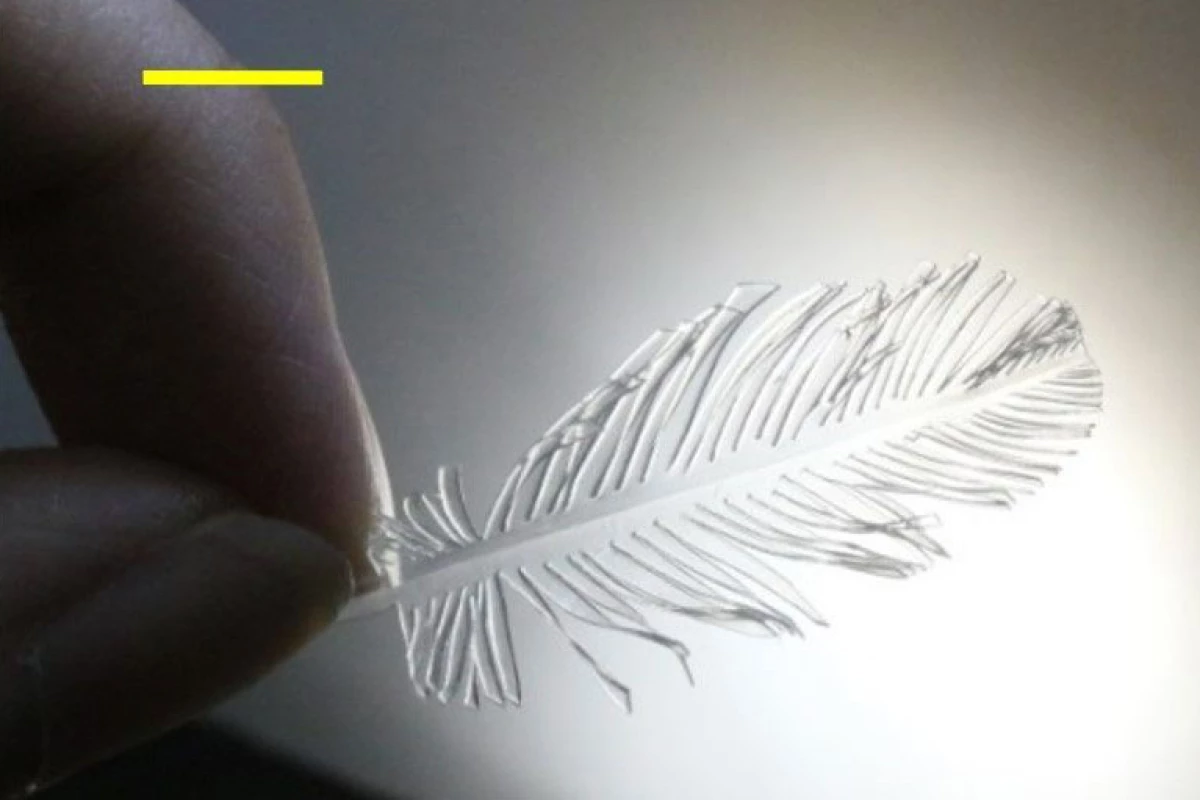Most three-dimensional glass objects are produced via either a molding, blowing or perhaps even 3D-printing process. Chinese scientists, however, have devised a technique of folding such items into shape – and it has some key advantages over other methods.
The origami-inspired process was devised by Yang Xu, a graduate student working in the lab of Prof. Tao Xie at Zhejiang University.
Xu started by mixing nanoparticles of silica into a solution of a photosensitive liquid polymer and other compounds. Exposure to ultraviolet light subsequently converted the solution into a solid cross-linked polycaprolactone polymer, throughout which silica beads were suspended.
Xu proceeded to cut the material into flat translucent sheets with mechanical properties similar to those of paper. She then folded, twisted and pulled those sheets into three-dimensional shapes such as a crane, lacy vase, feather, and a sphere made of interlaced ribbons.
While the sheets did generally hold those shapes when folded at room temperature, it was found that if the polymer was heated to 265 ºF (129 ºC) when being folded or stretched, it would hold its exact shape throughout the rest of the process. This happened because the application of heat permanently rearranged the links between the polymer chains.
Next, Xu heated the folded sheets to a temperature of over 1,100 ºF (593 ºC). This caused the polymer to melt away, leaving an opaque version of the folded object made up of just the linked silica beads. When the object was then heated to over 2,300 ºF (1,260 ºC), the beads melted, fused together and turned clear, forming a smooth, transparent finished product.
The technique is claimed to be capable of producing much more complex objects than is possible with glass molding or blowing. It's also said to be considerably faster than 3D printing, plus it doesn't result in the coarse, layered look of many 3D-printed items.
The scientists are now adapting the technology for use in the production of ceramic objects, by replacing the silica particles with ones made of materials such as titanium dioxide and zirconium dioxide.
Xu and Xie are presenting their research this Tuesday at the spring meeting of the American Chemical Society.
Source: American Chemical Society via EurekAlert




